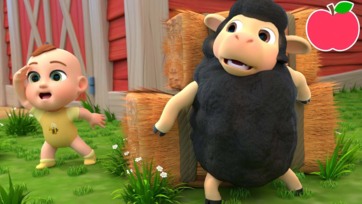The History of Nursery Rhymes, About Nursery Rhymes, and Lirycs

The Story Behind Old MacDonald Had a Farm
The Story Behind “Old MacDonald Had a Farm”
“Old MacDonald Had a Farm” is one of the most famous and well-loved nursery rhymes in the English-speaking world. Known for its catchy tune, playful lyrics, and interactive nature, the song has been a staple in children’s education and entertainment for generations. It’s a fun, engaging way to introduce children to the world of animals and the sounds they make, helping to foster early learning while providing endless entertainment.
Origins of “Old MacDonald Had a Farm”
The exact origins of “Old MacDonald Had a Farm” are difficult to pinpoint, but the song has evolved over time, borrowing elements from traditional folk tunes. The first known version appeared in the early 20th century, but its roots are thought to go back further to various folk songs sung in rural areas. The earliest printed versions of a similar song date back to 1917, where it was known as "Old McDougal Had a Farm," hinting that the name of the farmer has changed over time.
The American folk music tradition has played a key role in the development of “Old MacDonald.” It’s believed that early versions were popularized through rural and agricultural communities, where farming life was central to daily existence. The song became a way to teach children about animals and farming, helping them understand the important role agriculture played in their communities. As time passed, the rhyme became more standardized, and by the mid-20th century, the version we know today had become firmly entrenched in popular culture.
Lyrics and Structure
The simple structure of “Old MacDonald Had a Farm” is one of the reasons it has endured for so long. Each verse of the song introduces a new farm animal and the sound it makes, creating a repetitive and predictable pattern that is easy for young children to follow. The main chorus goes:
Old MacDonald had a farm,E-I-E-I-O.And on that farm, he had a [animal],E-I-E-I-O.With a [animal sound] here and a [animal sound] there,Here a [sound], there a [sound],Everywhere a [sound sound],Old MacDonald had a farm,E-I-E-I-O.
Each verse replaces the name of the animal and its corresponding sound, making it a fun, interactive experience for children who can sing along and imitate the sounds of different farm animals. The most common animals featured in the song include cows, chickens, pigs, ducks, and sheep, though it’s easy to adapt the lyrics to include any animal a child might like.
The repetitive nature of the song helps children develop language skills, including listening, memory, and vocabulary. As the song progresses, children are encouraged to recall the different animals and sounds introduced in previous verses, reinforcing their understanding of farm life and the natural world.
Educational Value
Beyond being a fun and lively song, “Old MacDonald Had a Farm” has significant educational value. It is frequently used in early childhood education because it teaches important foundational skills in a fun and engaging way. Here are some of the key educational benefits of the song:
Animal Identification: The song introduces children to different animals, helping them learn their names and associate them with their sounds. This kind of recognition is an important part of early learning, as it helps children build their vocabulary.
Phonemic Awareness: Phonemic awareness is the ability to hear and manipulate the sounds in words. By repeating the animal sounds throughout the song (e.g., “moo moo,” “quack quack”), children learn to recognize sound patterns and how they relate to spoken words.
Memory Development: The repetitive nature of the song encourages children to remember the order of the animals and their sounds. As they move through each verse, they are challenged to recall the previous animals, strengthening their memory skills.
Imaginative Play: The song provides an opportunity for imaginative play, as children often act out the different animals or pretend to be the farmer. Imaginative play is crucial for cognitive and social development, as it helps children experiment with different roles and scenarios.
Rhythm and Music Appreciation: “Old MacDonald Had a Farm” has a simple, easy-to-follow rhythm, which helps children develop an early appreciation for music and rhythm. Singing along also improves auditory discrimination, the ability to distinguish between different sounds.
Social Interaction: Since the song is often sung in groups, it encourages social interaction and teamwork. Children learn to take turns singing different parts of the song, listening to their peers and contributing to the overall experience.
Modern Popularity and Adaptations
“Old MacDonald Had a Farm” remains a popular song worldwide, with countless versions and adaptations available in books, TV shows, apps, and videos. The song’s simple structure allows it to be easily adapted to various languages and cultures, making it a global phenomenon. In some versions, the animals change based on regional preferences or native species, adding a layer of cultural diversity to the song.
Educational videos and apps often use “Old MacDonald” as a foundation for teaching young children about farms, animals, and even environmental conservation. Additionally, the song has been incorporated into many children’s shows and music collections, making it a mainstay in homes and classrooms.
Conclusion
“Old MacDonald Had a Farm” is much more than just a catchy nursery rhyme. Its rich history, simple structure, and educational benefits have made it a timeless favorite for children and educators alike. Through the song, children can explore the world of animals, learn key language and memory skills, and engage in playful, interactive learning. As it continues to be passed down through generations, “Old MacDonald” will undoubtedly remain an integral part of early childhood learning for years to come.